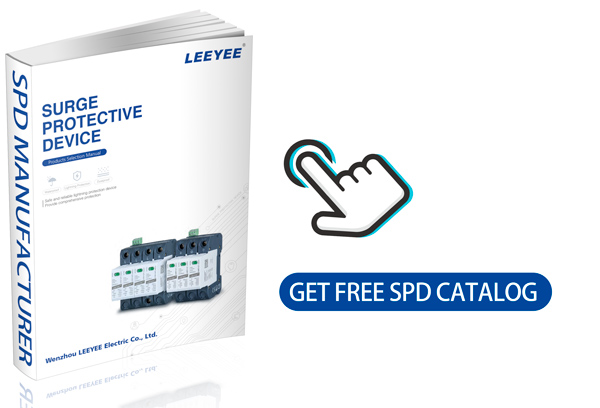A surge arrester is critical in protecting substations, transformers, and industrial systems from unexpected high-voltage surges. Without it, lightning or switching overvoltages can cause transformer failure, arc flash, or insulation breakdown.
LEEYEE, a certified surge protection manufacturer, provides engineered solutions for transmission lines, solar networks, and utility substations. With voltage ratings up to 35kV and discharge capacities up to 100kA, LEEYEE arresters comply with IEC 60099-4 and IEEE C62.11 standards.
Read on to understand surge arrester selection, classification, and real-world application.
What is a Surge Arrester? Technical Definition and Principle
This type of high-voltage suppression device is installed to limit transient overvoltages and prevent equipment failure. It operates by switching from high to low impedance when an abnormal voltage is detected, allowing surge energy to discharge to ground.
Modern models use metal oxide varistors (MOVs), which respond in microseconds and self-restore after the event, making them suitable for repeated use.
Key Standards:
-
IEC 60099-4 (Metal-oxide arresters)
-
IEEE C62.11 (Performance in power systems)
Technical Specifications of LEEYEE High-Voltage Protection Devices
| Parameter | Specification |
|---|---|
| Rated Voltage | 0.38kV – 35kV AC |
| Continuous Operating Voltage | 0.7–1.05 × Ur |
| Nominal Discharge Current | 5kA, 10kA |
| Peak Discharge Current | Up to 100kA (8/20μs waveform) |
| Energy Absorption | Up to 10 kJ/kV |
| Residual Voltage | 1.8–3.5 × Uc |
| Housing Material | UV-resistant silicone |
| Applicable Classes | Class 1 (station), Class 2 (distribution) |
| Certification | IEC, GB, ANSI/IEEE standards |
Types and Applications of Surge-Limiting Devices
1. Station-Class Models
-
Designed for HV substations (66kV and above)
-
Installed near transformers or GIS bays
2. Distribution-Class Models
-
Suitable for 6kV–35kV networks
-
Applied at switchgear and transformer HV terminals
3. Line Discharge Units
-
Installed along overhead lines
-
Reduce surge energy before it reaches substations
4. Use in Solar Systems
-
Protect inverters and DC buses
-
LEEYEE offers options up to 1500VDC
Surge Arrester vs SPD – Functional Differences
| Feature | High-Voltage Suppressor | Surge Protection Device (SPD) |
|---|---|---|
| Target Voltage | Medium–High Voltage (>6kV) | Low Voltage (≤1000V AC / 1500V DC) |
| Location | Outdoors, near HV equipment | Indoors, at load-side distribution points |
| Current Capacity | High (up to 100kA) | Moderate (20–40kA) |
| Governing Standard | IEC 60099-4 / IEEE C62.11 | IEC 61643-11 / EN50539 |
FAQs – Surge Arrester
1. What does this device protect?
It shields power lines and transformers from destructive voltage spikes.
2. How is it different from a lightning rod?
A lightning rod grounds direct strikes; this device manages surges within electrical systems.
3. Where should it be installed?
At transformer terminals, switchgear inlets, and critical points along overhead lines.
4. Can it fail?
Yes—aging, heat, or moisture can cause breakdown. Regular condition monitoring is recommended.
5. What standards apply?
Refer to IEC 60099-4 and IEEE C62.11 for selection and testing.
6. Can LEEYEE provide customized solutions?
Absolutely—OEM voltage tuning, labeling, and accessory kits are available.
7. How to select the right model?
Base your selection on system voltage, insulation level, and surge risk assessment.
⚠️ Professional Disclaimer – Surge Arrester Use in Power Systems
This content is intended for engineering professionals. Device selection, installation, and coordination must follow IEC/IEEE standards and be carried out by qualified personnel.

